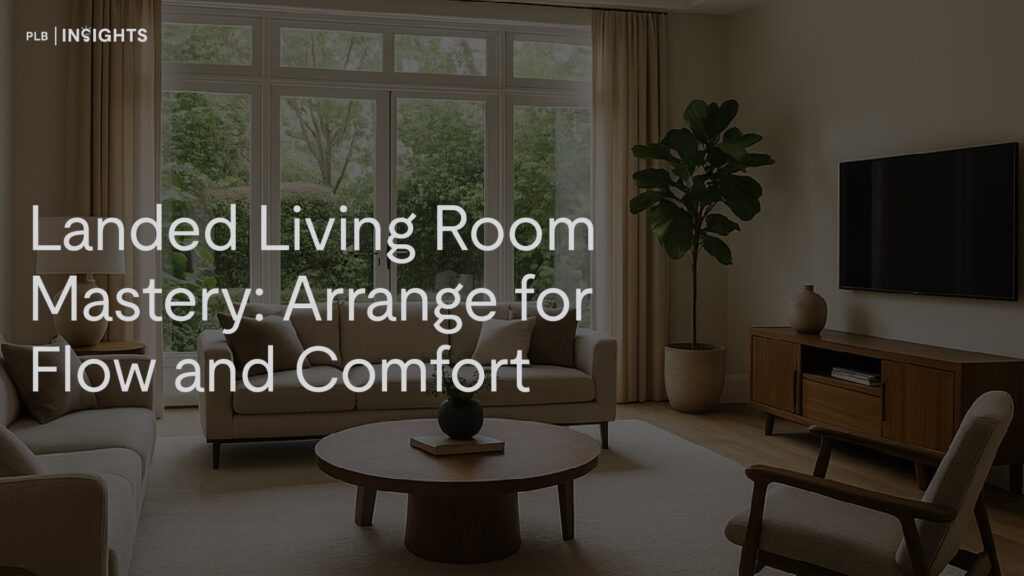
Designing a landed home is as much about flow as it is about form. In our previous feature on kitchen planning — where we explored how thoughtful circulation and sightlines transform daily living — we saw how the best spaces don’t just look good; they live well.
The same principle applies to the living room. This is the emotional core of a home — the space guests first experience, where family members naturally gather, and where everyday routines quietly unfold. Yet even with the luxury of floor area that landed homes enjoy, layouts can still feel awkward or unintuitive if furniture competes with the natural movement of the home.
A well-arranged living room is not simply styled — it is choreographed. It guides how people enter, how conversations form, where the eye rests, and how the space makes you feel from the very first step inside. When circulation supports — rather than fights — the architecture, the result is an atmosphere of ease, warmth, and understated sophistication.
Below, we explore eight principles for arranging living room furniture in landed homes to create flow, comfort, and coherence — so your space not only looks elevated but feels effortless.
Map the Pathways First
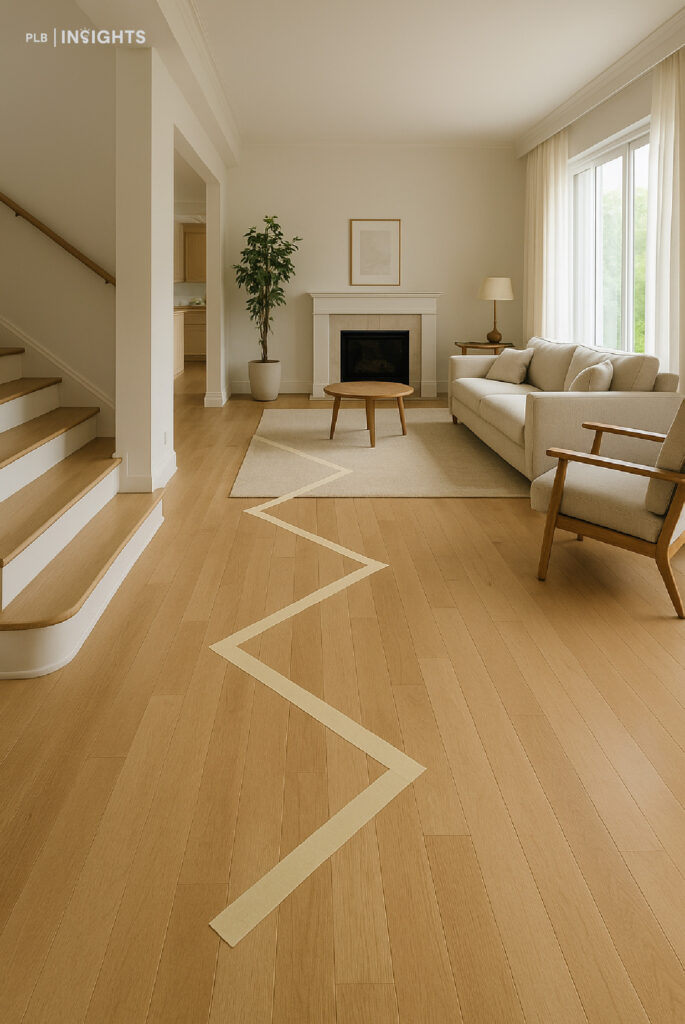
Before placing a single sofa or armchair, visualise how people would naturally move through the space.
Every home has instinctive circulation paths — from the main entry toward the kitchen, from the stairs toward the dining space, from the patio toward the living zone. When furniture disrupts these natural routes, the home feels cramped and circulation becomes a chore.
In landed homes, multiple access points (front porch, garden, back yard, terraces) intensify the need for intentional layout planning. Gentle, uninterrupted pathways signal ease; blocked circulation introduces subconscious stress.
A good litmus test: if someone carrying groceries, drinks, or with children in tow has to weave around your furniture, the layout may need rethinking.
Tip: Use simple masking tape on the floor to trace natural walking routes before moving furniture.
Seat Away from Traffic Zones
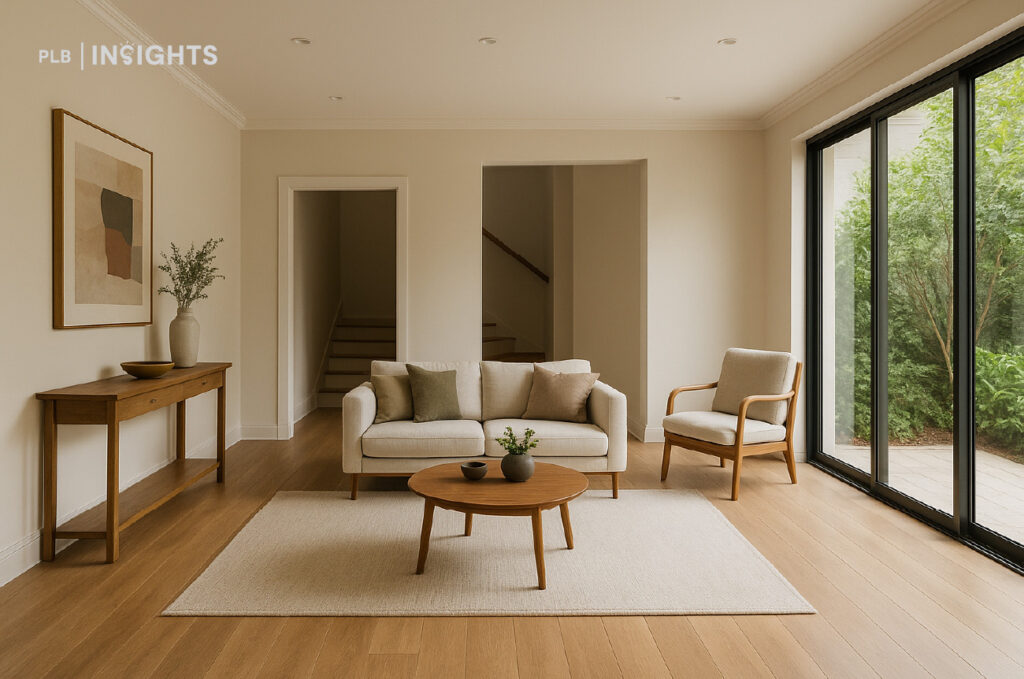
Once circulation is visualised, carve out seating zones in the “quiet pockets” away from high-traffic movement.
Avoid placing chairs or sofas directly in traffic lanes — this leads to bumping, awkward movement, and visual clutter. Instead, locate seating slightly off-axis from the main flow.
Landed living rooms often have the space to create:

These micro-zones soften large living rooms and make them feel intimate — but they must emerge naturally from circulation planning, not compete with it.
Align Furniture with Architectural Axes

Furniture should respond to structure — not float without purpose.
Identify your architectural anchors:

Align sofas and major seating pieces to these axes to ground the room visually. Symmetry in large spaces provides balance, but too much symmetry makes the space feel overly rigid. Mix structured placement with subtle asymmetry to bring life to the room.
Think: order with personality, not showroom rigidity.
Frame the First View
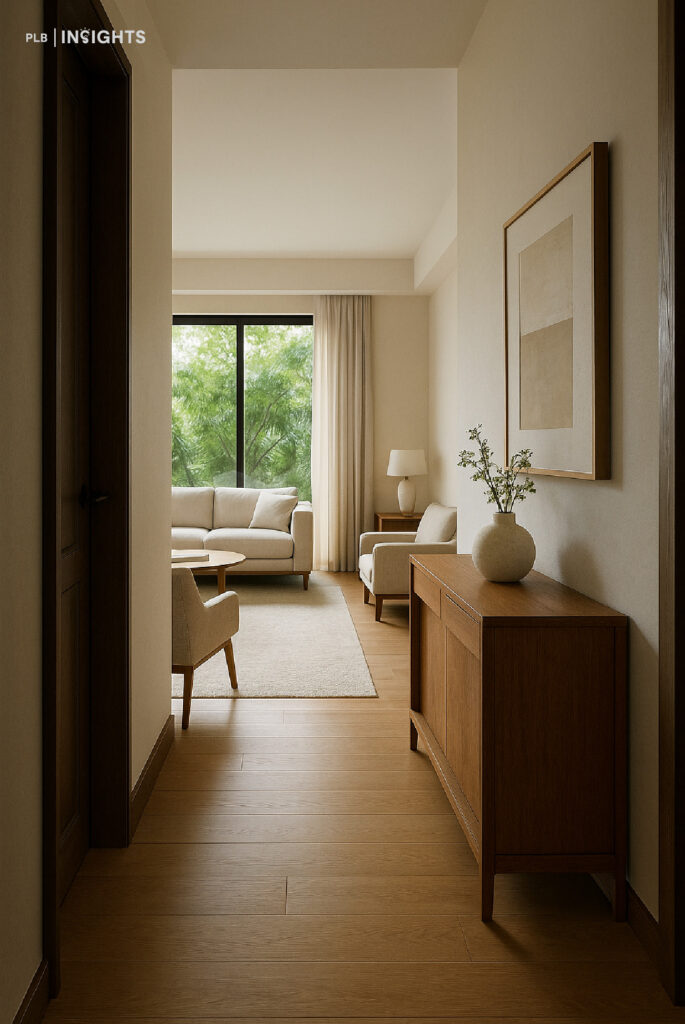
The view upon entry sets the emotional tone.
Ask:

Avoid first-view blockers such as the back of a bulky sofa or a cluttered storage zone. Instead introduce a visual “welcome moment”: an accent chair, sculpture, console vignette, or viewline directed toward greenery or natural light.
In landed homes, where entrances often flow directly into spacious living areas, this intentional framing elevates first impressions.
Respect Everyday Sight Lines
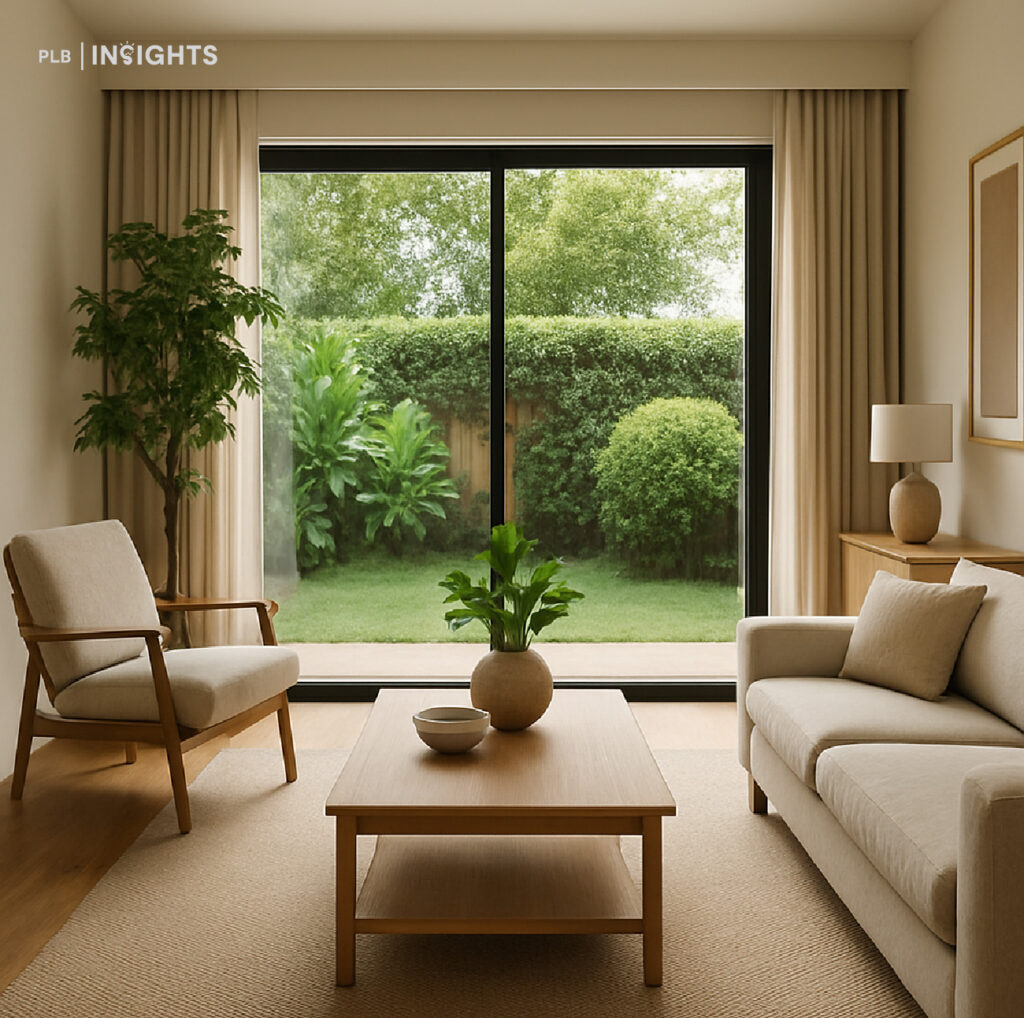
Design for the sight lines you live with — not just those you greet guests with.
Sit on the sofa and look around. What do you see?
From the dining table?
From your favourite reading chair?
If your daily view faces laundry baskets, doors to utilities, or cluttered corners, aesthetic harmony breaks.
Solutions:

Landed homes often enjoy greenery or sky views — orient sightlines to maximise them.
Create Conversational Seating, Not Rows
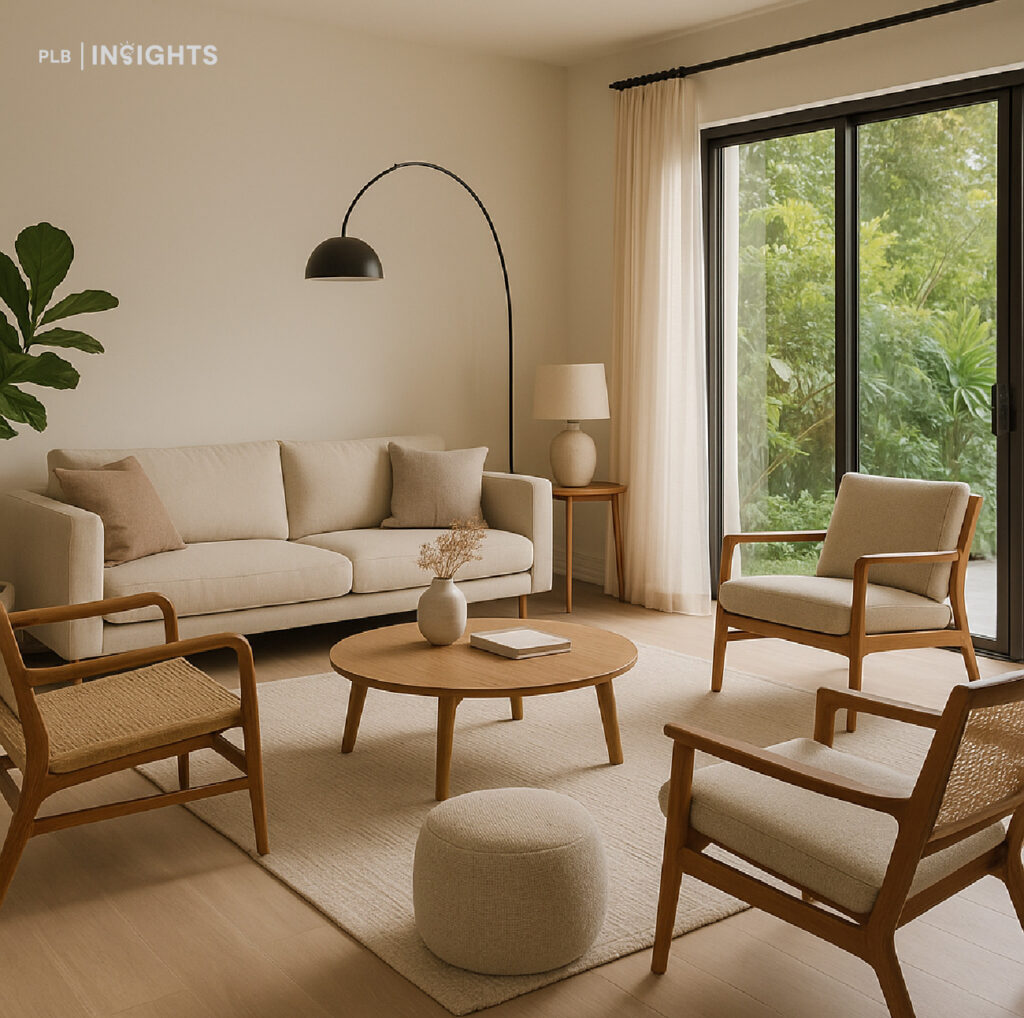
Social seating enhances landed living.
Instead of one long sofa all facing forward, combine:

Avoid straight-line “cinema layouts.” A living room should welcome conversation, not just TV watching. Slight angles or curved placement introduce friendliness and flow.
Different seating types also add softness and texture — think cane, upholstered lounges, timber accents — making the space feel curated and lived-in, not staged.
Anchor Seating Areas with Tables
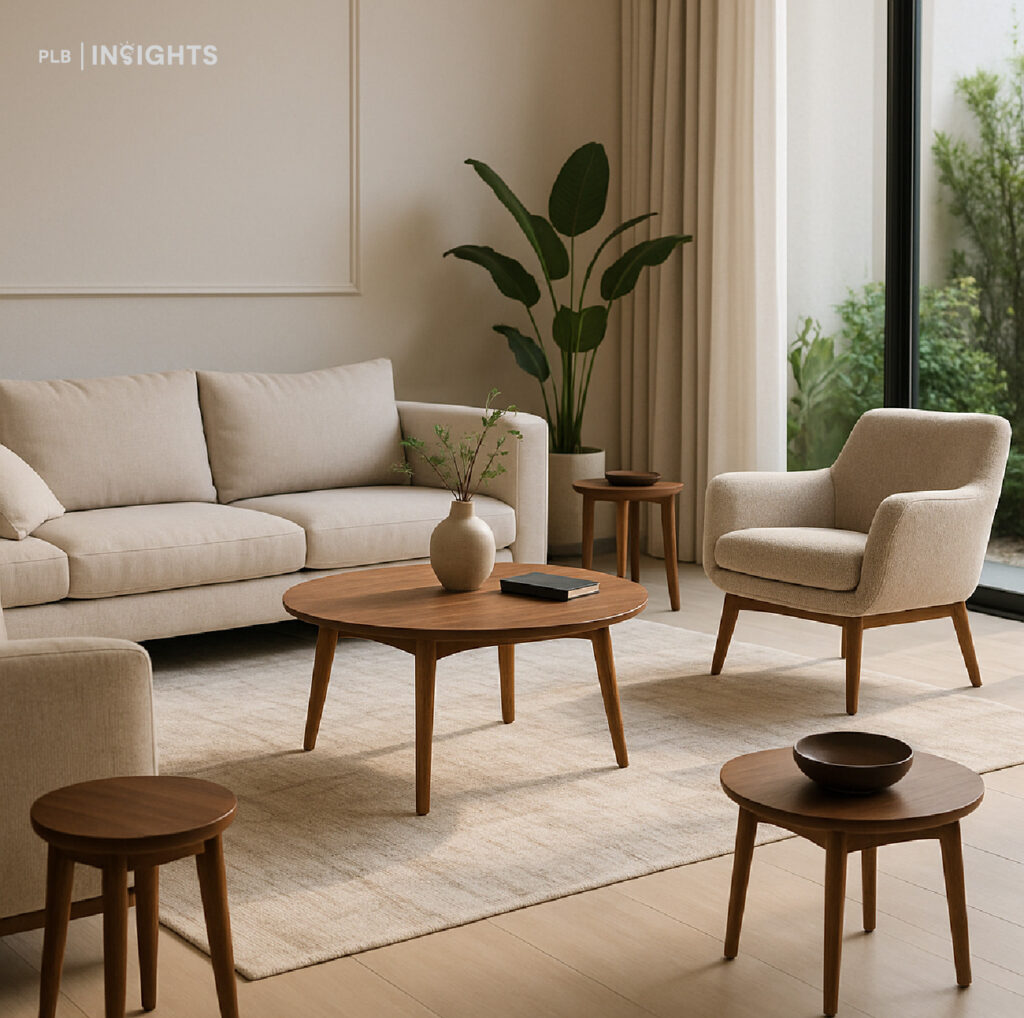
A table anchors the gathering zone — functionally and visually.
In landed home settings, where scale matters even more, each seating cluster benefits from anchoring:

These surfaces make entertaining and lounging intuitive — and prevent the room from feeling sparse or disconnected.
Mark Boundaries and Layer Warmth with Rugs
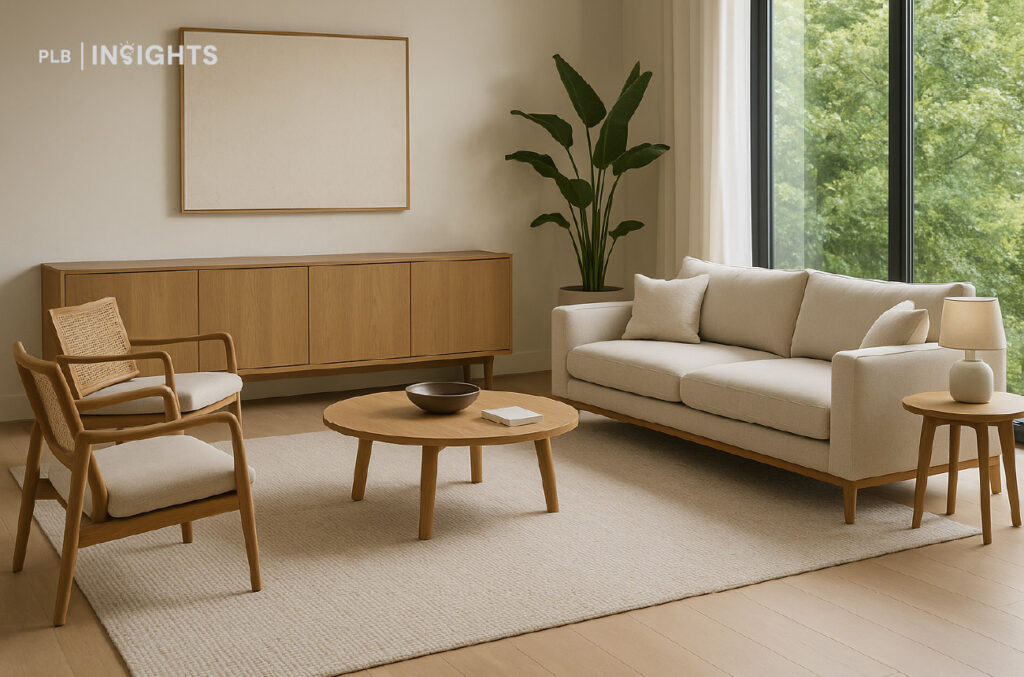
Rugs visually unite a seating arrangement.
In open-plan landed layouts, rugs also define function zones while softening acoustics — an important detail in large volume spaces or double-height living rooms.
Guidelines:

If rugs are impractical (pets, children), consider other subtle zoning tools like cabinetry lines, planter groupings, or slight orientation shifts in flooring.
Flow, Warmth, and Liveability — The Essence of Landed Design
A well-arranged landed living room supports movement, conversation, and relaxation in equal measure. It listens to the architecture, frames moments of calm, and guides circulation without drawing attention to itself.
The best living rooms aren’t grand for grandeur’s sake — they are gentle, intuitive, and deeply comfortable. They feel like home.
And just as thoughtful planning reshapes kitchens and living rooms alike, every element of a landed property — from spatial flow to finishing touches — works together to build a timeless living environment.
Thoughtful design elevates how a landed home feels — but strategy matters just as much when it comes to buying or selling. Speak with our team to position your home effectively or find the right one for your lifestyle.
Thank you for reading, and stay tuned! For more detailed insights regarding the landed property market, join our Landed VIP Club and stay updated with the latest market trends and expert advice.








